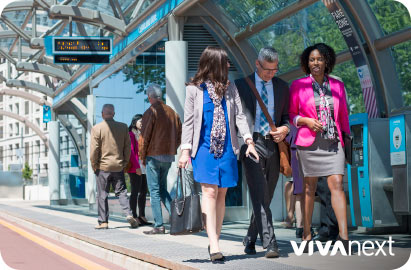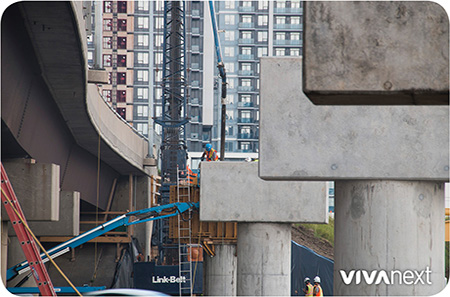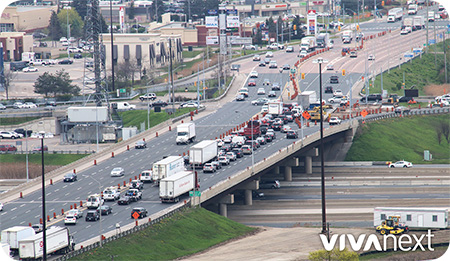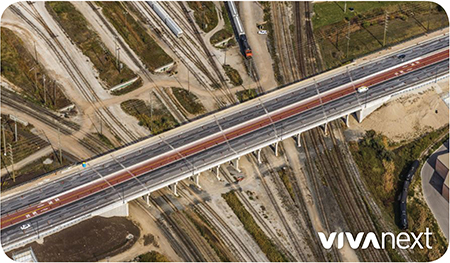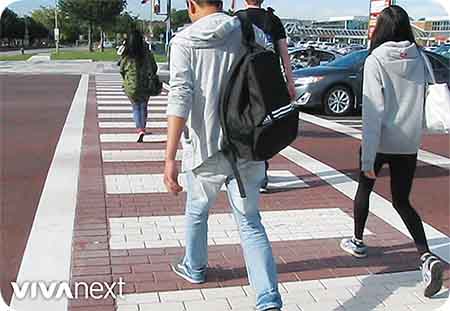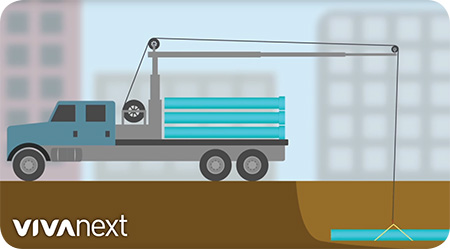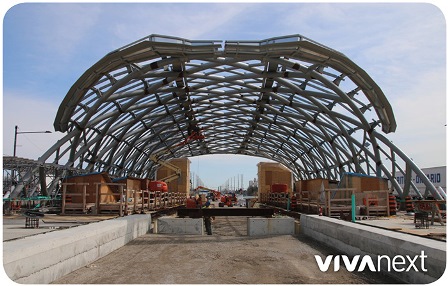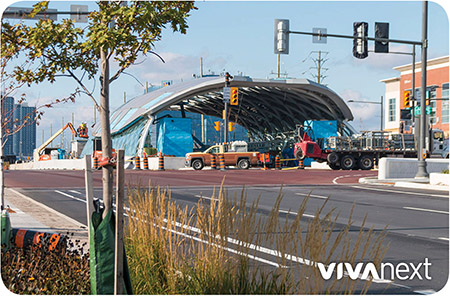
City living in York Region provides lots of advantages, from all the great places to shop, eat and live, to entertainment options, and of course the increasing number of employers choosing to locate here. But one advantage country living usually has over city life is the abundance of green, natural spaces.
Fortunately, we’ve all come to understand and appreciate the value of trees and landscaping in our urban spaces. More greenery is good for our air quality, increases property values, and can lower energy costs. It makes our urban spaces feel more welcoming and human-scaled. Plus, it just looks good.
greenery a vivaNext priority
For all those reasons, introducing more greenery and landscaping to the communities where we build our projects has always been a vivaNext priority. Plants are chosen largely for their practicality. Median and boulevard planters filled with lovely, healthy blooms and foliage look gorgeous. Median planters filled with sad, struggling plants? Not so much.
roadside plantings face tough ride
The challenge in getting more of the former and less of the latter, is finding plants that can cope with the often-inhospitable environment associated with roadside plantings. Roadside plantings have to cope with heavy doses of wind, pollution, and winter road salt spray. We’ve made an incredible effort to give our plantings every possible advantage, from the design of the planters, to the amount and type of soil, to the actual choices of trees and plants.
Some of the plants selected for our first projects didn’t thrive as well as we hoped, so we redesigned our plant selections for the rapidways. Now we’re using an even tougher group of plants with a built-in advantage: they already grow wild in this area. Many of the new plants are those you’ll find in rural York Region, growing happily along roadsides and around old farmhouses.
going wild at the VMC
Some, like sumacs, grasses and Kentucky Coffee trees [which isn’t really a coffee tree, but has pods with seeds inside that early settlers used to make a coffee-like drink], are native to parts of Ontario. Others, such as rugosa roses and daylilies, might have been planted many years ago by humans, but they’re so tough, they don’t need any help once they get established and are happy growing wild.
The new flowers, grasses, shrubs and trees, including those we’ve planted in Vaughan Metropolitan Centre, will add a beautiful green note to the Viva rapidways and stations. And because we’ve chosen these natural-born survivors, they should be green and blooming for years to come.

